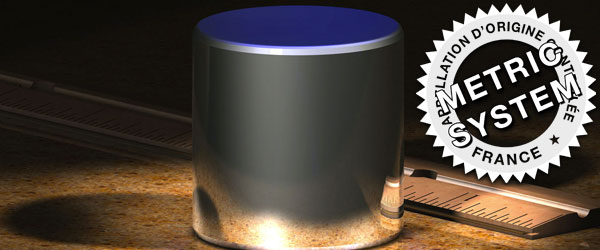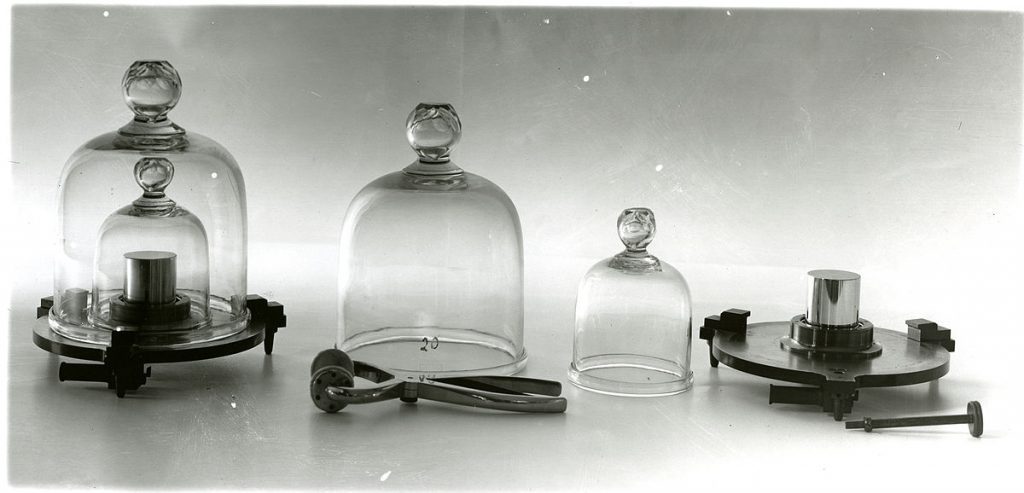
Have you ever wondered why a kilogramme weighs a kilogramme? For the past 230 years, since the time of the French Revolution, a kilogramme has been defined as the amount that a very particular, golf-ball sized chunk of iridium and platinum weighs. It’s done a good job over the last couple of centuries, keeping the office weight of a kilogramme constant. But, like so many other things in the modern world, for today’s digital and industrial technology, it simply isn’t accurate enough.
You might think that a chunk of metal in a box would be a pretty accurate measure of weight. But it turns out that the platinum-iridium block has been losing weight over time. This is because every time the block is handled by people as it is taken out of its box, a few atoms get scraped off the surface. So what, you might think? Well, it turns out that if this process carries on for more than a century – which it has in this case – what was once a kilogramme turns out to be significantly less: 0.0001g less to be precise.
0.0001 grams is about the weight of your standard spec of dust, and it is enough for scientists to get worried and want to find a new way to define a kilogram.

10 More Inventions You Had No Idea Were French
But researchers’ solution isn’t just to find a new material. Instead, they are looking for a mathematical way to define a kilogramme – one that won’t change just because people are handling an object.
According to Dr Giovanna Nama, a researcher from the National Institute for Metrology Research in Turin, this is easier said than done. The problem at the moment is that until now, there weren’t any technologies that allowed for a change in the definition of a kilogramme to occur. But a breakthrough was needed, he said because more accurate measurements will enable further advances in miniaturised technology.
Giovanni’s ideas is to use the number of atoms in a kilogramme of silicon instead as the definition of a kilogramme. But the problem that scientists and calibration services have had is working out just how many silicon atoms precisely equal the weight of the platinum-iridium block.
Giovanni has recommended that scientists use two approaches in tandem. One approach is to use something called Avogadro’s number from chemistry. This is a number that chemists have used for over a century to estimate the number of atoms in a particular piece of material. Giovanni, however, realised that this number is not accurate enough to precisely determine how many atoms of silicon make a kilogramme, so he combined it with another quantity from the field of physics – Planck’s constant – which is used to describe how quantum particles work.
According to Giovanni, if the two measures agree, then it is possible to define the number of atoms in a kilogramme of silicon as the new measure for a kilogramme. The kilogramme is the last standard unit to still be based on a physical artefact, and so scientists are keen to see it superseded by something more accurate.






